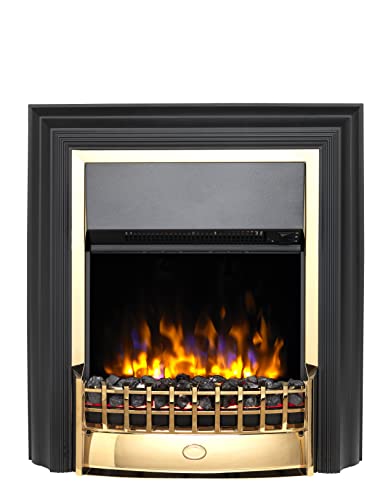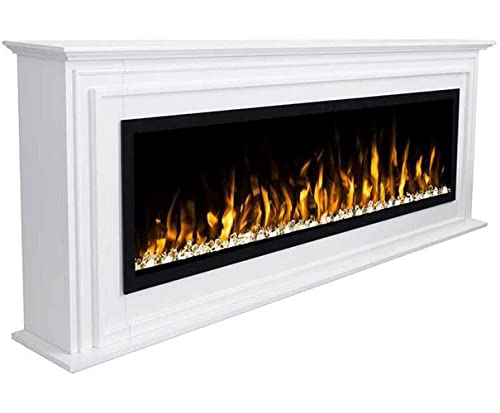
Fireplaces And Stoves
Add a review FollowOverview
-
Sectors Telecommunications Officer
-
Posted Jobs 0
-
Viewed 180
Company Description
15 Gifts For The Fireplace Surround Lover In Your Life
Choosing a Fireplace Surround

Fortunately, these custom-built surrounds are constructed using non-combustible materials that adhere to the National Fire Code. They look fantastic in any style of home.
Simple Concrete Surround with Marble Slabs
A fireplace surround is the focal point of a room, and can bring warmth and charm. It can be constructed from many different materials and crafted to match various styles of design. It’s important to consider the design of the room as well as the budget prior to deciding on a fireplace surround design.
Marble fireplace surrounds give an elegant look that is compatible with a variety of design styles. They can be paired with rustic woods or modern metals to create a unique and contemporary style. Marble is easy to maintain and it can withstand high temperatures making it a good choice for a surround.
Stone is a popular material for fireplace surrounds. It offers a timeless appeal that can be found in a variety of homes. It can be carved or etched to create contemporary appearance or left unfinished to give it a classic feel. Stacked stone veneers are another popular option that can be used to add texture and depth to the interior of a room.
Granite is a popular choice for modern fireplace surrounds since it’s strong and resistant to heat very well. It comes in a variety of designs and colors, so you can create different designs. Quartzite can also be molded and shaped to fit a modern surround.
If you’re a DIYer, installing a concrete fireplace surround could be within your capabilities. It may seem like a daunting task but it’s much easier than you think working with professionals and think ahead.
It’s also a good idea to speak with a professional when creating a fireplace surround made of marble, as it requires special care to avoid damage. A carpenter with experience can help you avoid costly mistakes.
If you’re planning on using tile for your fireplace surround, make sure it’s rated for high-temperature applications. This information is typically found on the label, or you can inquire with an employee at the home improvement store.
Leaning Frame Surround
The fireplace surround can completely transform an area. It’s not just designed to look attractive, but also has a functional function, which is to protect the wall behind the fireplace from damage caused by fire and deflect heat away from the room. It’s available in various materials and can be made to match any style or decor.
The right material is essential to achieving a deliberate aesthetic. Concrete is an excellent option because it’s extremely durable and non-flammable. It also has an appealing visual appeal due to its natural texture and color. It is typically poured in a mold to allow you to choose the option of creating an original shape.
When you design your leaning frame, make sure to include layers. This helps the piece look more planned and curated rather than being thrown randomly on the shelf or wall. If you plan to display heavy items such as vases or lamps on leaning frames, you can place a piece of lining for a drawer made of rubber beneath the base. This will prevent them from sliding and damaging surfaces.
You could consider adding a wooden piece to the bottom of a concrete or marble surround. This will help keep it in the right place. It can also reduce the weight and stop the item from moving while you enjoy a cup of coffee or wine in the fireplace.
After you’ve selected the material for your frame’s leaning frame then it’s time to begin building the actual piece. Mark the wall with the dimensions of your surround. Then using a saw cut cleats along each line. Make sure that the top cleat of the shelf is at least one foot shorter.
Attach the brackets to the wall. Make sure that the bolts pass through the backer board and into the stud. Pre-drilling the screw holes is recommended if required. Then, you can temporarily clamp the mantel to the backer board. Attach the mantel using lag bolts (2-4 bolts per stud). Make sure the bolts are strong and long enough to cover the thickness of the backerboard, plus 2/3 of the depth of the mantel.
Black Firebox Surround
Fireplace surrounds serve both a decorative and functional purpose. They protect walls against heat damage and also reflect heat back into the room and make a fireplace an eye-catching feature in an area. Wood and metal are the most commonly used materials used for fireplace surrounds. Metal surrounds are required by the building code to guard against nearby combustible substances or they can enhance the aesthetics of a fireplace.
This fireplace is modern living room with an all-black surround and white marble accents. The stone is a premium material that requires more attention than a mantel made of wood, however it adds a dramatic and striking design element to the space. The black finish also joins together the dark tones in the furniture and wood flooring for an attractive design.
While you may associate concrete with sidewalks and driveways, it’s actually a very versatile and fireplacesandstoves attractive material for fireplace surrounds. It can be cut into a variety of shapes and then poured in place, allowing for virtually unlimited designs. This concrete surround has been shaped into a curved profile giving it an elegant, modern look that contrasts with the darker shades of the brick floor and wood wall.
Another popular material for fireplace surrounds is wood, which is available in a variety of colors and textures to complement any decor scheme. Wooden surrounds can be finished in any color to complement your hearth pad. They are lighter and more affordable than the masonry surrounds. Most wooden surrounds can accommodate decoration for your mantel, including vases and lamps.
Some wood surrounds come with a faceplate that is placed on top of the mantel and houses the fireplace doors. This plate can be affixed with hinges that are decorative or fasteners that mimic the appearance of iron wrought.
It is important to take into account the dimensions of your fireplace when choosing a mantel made of wood. Building codes require minimum clearance distances to prevent the spread of a fire into the home. This distance can vary depending on what kind of fireplace you have and also from state state or country country.
Simple Wood Surround
There are a variety of options for surrounds if you want to give your fireplace a traditional style. Some surrounds are made of solid oak, while others combine stone legs with pine or oak mantels. You can also find oak or pine fireplace surrounds that are designed to be a low-cost and easy option.
Many people choose to purchase a pre-made wood fireplace surround because it is an affordable way to get the style they want without hiring a carpenter. Certain pre-made pine fireplace surrounds are available in a range of different finishes so that you can make it a part of your existing decor.
A wood fire surround that is hand-crafted constructed from top quality oak is also a popular choice. It can be stained with the light oak color or left untreated to allow the natural light golden brown of the wood to show through. This fireplace surround is suitable for wood or gas burning fires and can be fitted either with a flat or arched opening.
There are a lot of tutorials available online for those who have more experience with DIY home improvement projects. They can help you make your own fireplace surround from wood. This step-by-step tutorial from H2O Bungalow shows you how to make a rustic wood surround using pine.
The guide explains how to build the horizontal part of the fireplace surround first, then how to construct the columns or pilasters vertically that support the mantel. Once these are completed, you can install the mantel itself. Then, the guide shows you how to attach the crown molding that will be used to fill in any gaps between the cladding and surrounding wall.
It is important to follow the local fire code when installing a wooden surround around a fireplace. It is recommended to keep the surround 6 inches away from the edge of the opening. It is also essential to use a non-flammable adhesive to attach the decorative molding and ensure that it remains in place when the surround is set.
